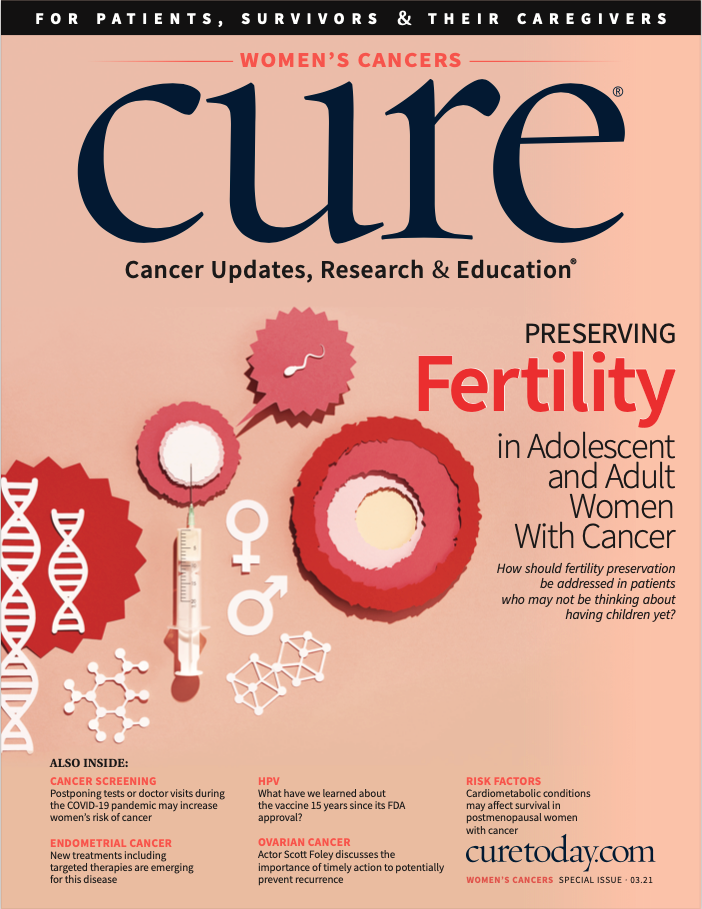Publication
Article
CURE
Many Women Are Satisfied After 'Going Flat' Post-Mastectomy, Study Finds
Author(s):
Although most patients reported satisfaction after undergoing a mastectomy without breast reconstruction surgery, 20.7% of women felt that their surgeon was not supportive of their decision to do so.
Most patients — 73.7% — who underwent a mastectomy without breast reconstruction reported that they were satisfied with their surgical outcome, according to a study published in the Annals of Surgical Oncology.
“For patients, the findings may serve to reinforce their decision and may provide some degree of support knowing that there are others who are making the same choice that they are,” said Dr. Deanna J. Attai, associate clinical professor in the department of surgery at UCLA David Geffen School of Medicine, in an interview with CURE®. “The findings may also help patients better communicate with their surgeons regarding their surgical choice.”
READ MORE: Flatties Unite: The Choice to Forego Breast Reconstruction
Some studies have highlighted that women who did not undergo reconstruction with their mastectomy were less satisfied and had a poorer quality of life compared with those who underwent immediate reconstruction, although Attai and her team wanted to look into this more after seeing contrasting reactions online.
“I was seeing an increasing number of women in the online communities openly discussing their ‘going flat’ experience, as well as seeing more online support and advocacy organizations for these women,” said Attai. “There seemed to be a disconnect between what I was reading in the surgical literature and what I was seeing in the online communities. That’s what sparked my interest. I think the findings are important because if all surgeons are exposed to are studies showing lower satisfaction, they may be less likely to recommend going flat to their patients.”
In this study, researchers surveyed 931 women (mean age, 49 years) who had a unilateral (one breast) or bilateral mastectomy (both breasts) to either treat breast cancer or potentially reduce elevated breast cancer risk. All women who completed the online survey did not undergo breast mound reconstruction. In the survey, women used a five-point scale to rate their satisfaction of the surgical outcome and the support they received from their surgeon throughout the process.
The decision to proceed with a mastectomy alone was the first choice for 73.7% of women in the study.
“While our respondent population may not be representative of the ‘average’ patient, it’s still a large number of women who were happy with their results,” said Attai.
Although 65.2% of patients reported that they received adequate information about their surgical options before making their decision, 20.7% reported that their surgeon did not support or respect their decision to go flat.
“(‘Flat denial’) is a term I learned from the patients, and it includes not initially being offered the option to go flat, being discouraged (by their surgeon) from going flat, or the surgeon not performing the agreed-upon procedure — intentionally leaving excess skin and later stating it was done in case the patient changed her mind about reconstruction (and that the excess skin could be used for a subsequent procedure,” said Attai.
READ MORE:Make it A Double: My Decision to Go Flat After Breast Cancer
Women reported that the main reasons for undergoing only a mastectomy is to avoid the placement of a foreign object in their body and to recover quicker than if they also underwent reconstruction. The mean score for satisfaction after mastectomy in this study was 3.72 out of 5.
The strongest predictor of a satisfaction score lower than three was a low level of surgeon support on their decision to go flat. Dissatisfaction with surgical outcome was also seen in patients with a BMI of 30 kg/m2 or higher and in those who underwent a unilateral mastectomy. In contrast, patients were more likely to report greater satisfaction if they received adequate information on surgical options and had a surgeon with a practice focused on specialized breast surgery.
There are some limitations to this study, including the survey that was used to collect information. “Our study was unique in that we did not use a validated survey tool to measure satisfaction, and the reason was that our patient advocates who partners with us felt that the primary tool was biased towards reconstruction,” said Attai. “Of course, that is one of the limitations of our work, and future work should be done to develop and validate a survey tool for this patient population.”
For more news on cancer updates, research and education, don’t forget to subscribe to CURE®’s newsletters here





